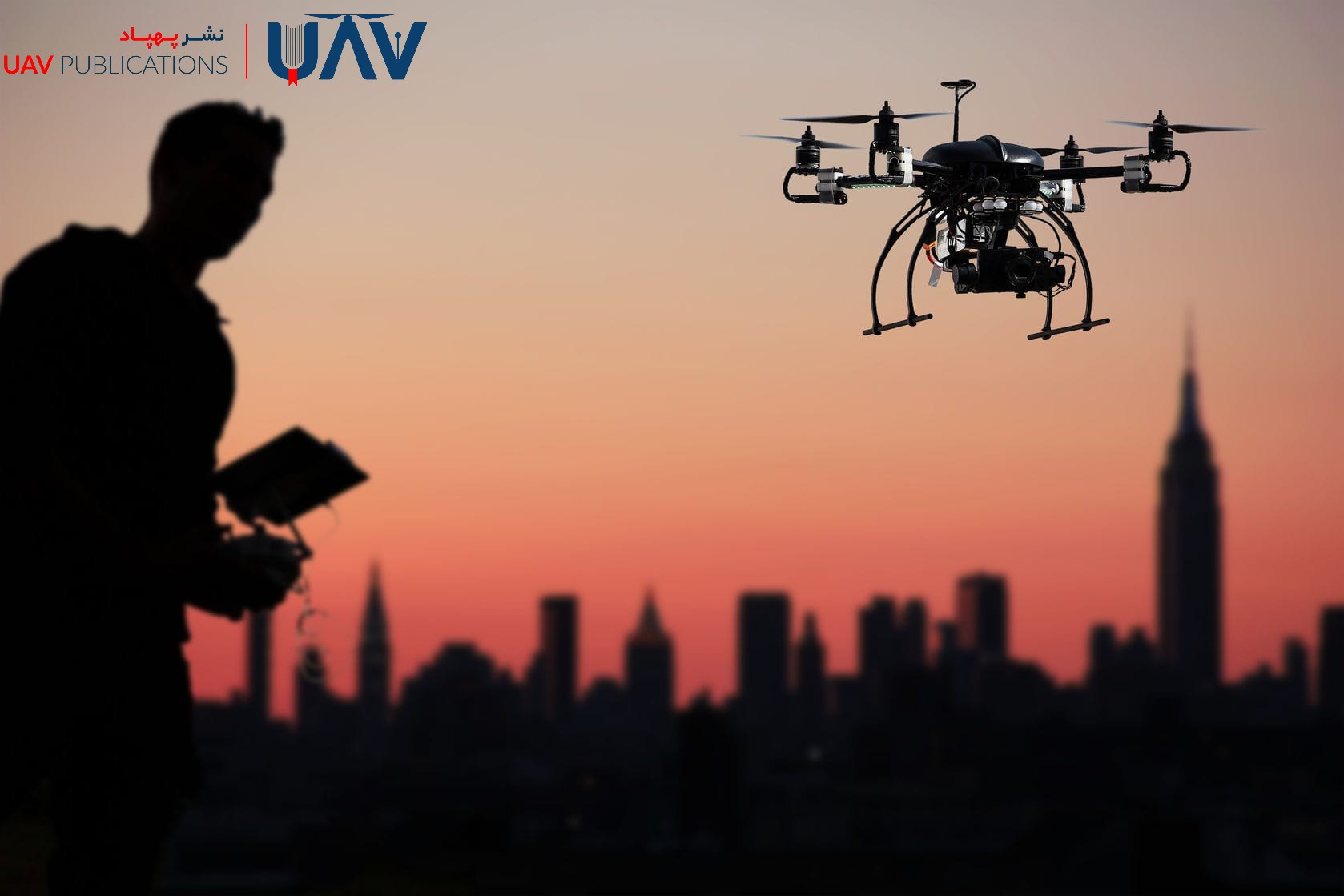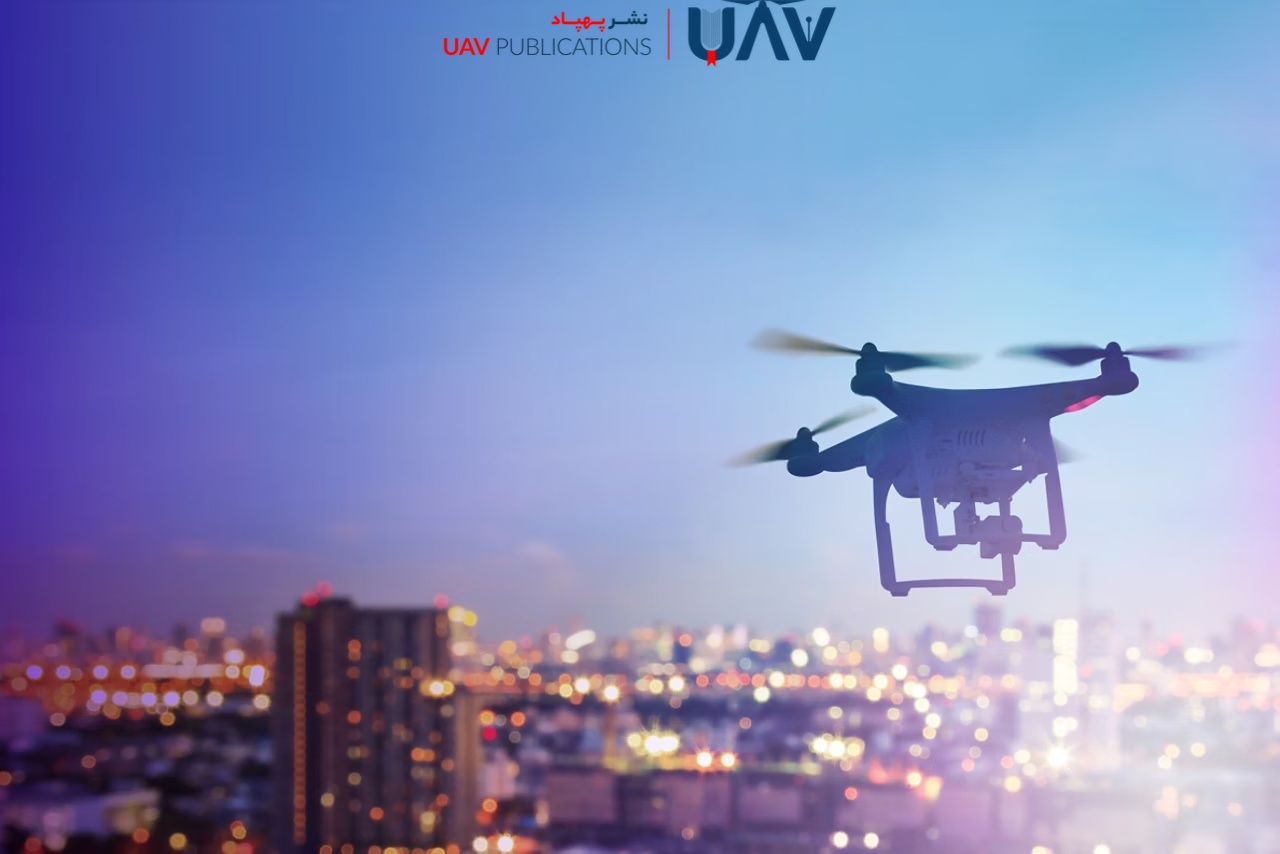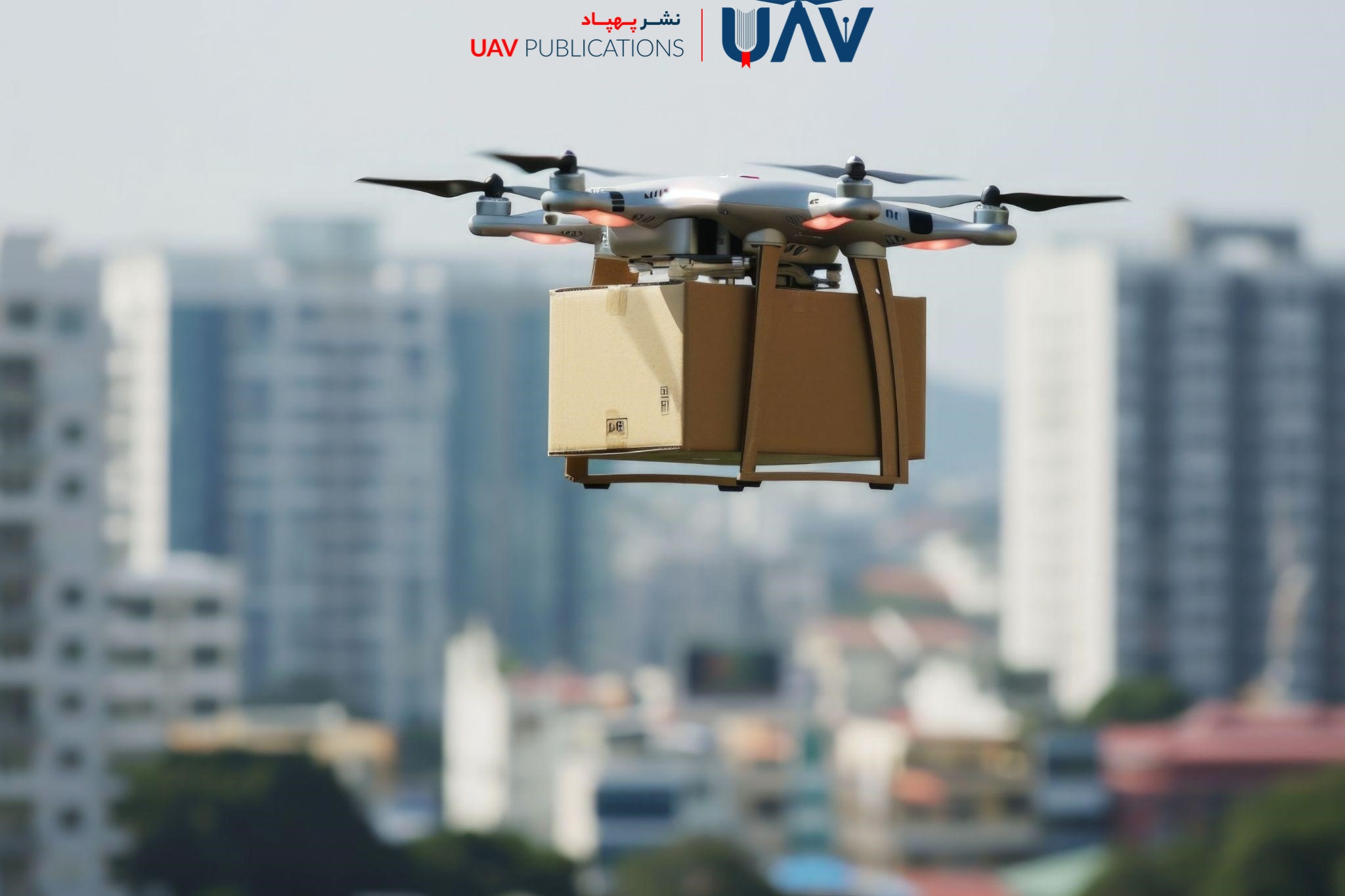How and Why Drones Are Changing the Landscape of Transportation and Postal Logistics
With the rapid growth of e-commerce and the increasing demand for faster, safer, and more cost-effective delivery, drones have emerged as a transformative technology in the transportation and postal sectors. In today’s world, customers expect to receive their packages as quickly as possible, and this is where drones play a crucial role. These aerial vehicles can navigate routes inaccessible to traditional ground transportation. Unrestricted by streets and roadways, drones fly directly from warehouse to doorstep, dramatically reducing delivery times and eliminating delays caused by traffic congestion.
Rising fuel prices, labor costs, and vehicle maintenance expenses have also pushed businesses to seek more efficient alternatives. Drones, with their low energy consumption and minimal workforce requirements, present an ideal solution for the future of delivery and logistics. Their emergence directly addresses market demands for speed, accuracy, and efficiency, ushering in a transformation that may redefine the logistics industry as a whole.
Urban Mobility Reinvented: Drones in the City
For years, urban transportation has struggled with issues such as heavy traffic, air pollution, accidents, and service delays. The integration of drones into this space presents a novel and intelligent solution that can significantly mitigate these challenges. In large cities, delivering small packages by car or motorcycle only exacerbates traffic and wastes energy. Drones, however, can bypass such congestion by flying directly over buildings, enabling unprecedented delivery speeds. In emergencies—such as delivering medical supplies or urgent documents—drones can be lifesaving tools.
Furthermore, widespread drone use reduces the number of vehicles on the road, directly lowering air pollution, fossil fuel consumption, and noise. The development of drone-related infrastructure (such as landing pads and navigation towers) could also reshape urban landscapes and lay the groundwork for smarter cities.
The Future of Parcel Delivery: Speed and Precision
Drones are redefining a core principle of the postal industry: delivery time. What once took days or even weeks can now be accomplished in under an hour. Leading companies such as Amazon, UPS, and DHL have pioneered drone-based delivery of lightweight packages, with a clear objective: to achieve faster and more accurate delivery without human intervention. This shift enhances customer experience and increases satisfaction.

Drones also play a vital role in areas with limited or nonexistent postal infrastructure—such as remote villages, mountainous regions, or disaster zones—where timely delivery of medicine, blood supplies, or essential items can be the difference between life and death. Soon, drones may become a standard component of the logistics cycle, moving seamlessly from warehouse to doorstep with reduced costs and greater speed. This transformation will not only reshape business models but also redefine customer expectations for delivery services.
Key Advantages of Drones in Logistics
Drones offer a wide array of benefits in postal and logistics operations, many of which can provide companies with a significant competitive edge. Chief among them is reduced delivery time. Unhindered by traffic or terrain, drones take the most direct route to their destination. Operational costs are also dramatically lower—drones require no fuel, minimal maintenance, and no drivers or couriers, resulting in substantial long-term savings.
From an environmental perspective, drones are also superior. Powered by electricity, they significantly reduce greenhouse gas emissions and promote sustainable transportation. Their GPS-guided systems and AI-based navigation enable highly accurate deliveries. Moreover, drones can operate effectively in disaster scenarios, such as floods, earthquakes, or pandemics, making them essential assets in crisis logistics.
Time and Cost Savings Through Aerial Delivery
The most notable advantage of drones in the postal industry is their ability to reduce both time and cost drastically. In traditional models, human labor, vehicles, fuel, and long, traffic-prone routes contribute significantly to operational expenses. Drones eliminate or reduce many of these burdens by flying directly from distribution centers to delivery points, without stops or delays. This rapid delivery model is especially transformative for industries where time is critical, such as pharmacies, restaurants, or online retailers.
Financially, logistics companies can cut operational costs by shrinking their vehicle fleets and workforce. Drones also incur lower maintenance costs and experience less wear and tear. Additionally, electric power is both more environmentally friendly and economically sustainable than fossil fuels. In short, drone-based delivery offers not only a faster response to customer needs but also a leaner, more efficient business model.
Reducing Pollution and Alleviating Traffic
Urban postal systems that rely on cars and motorcycles contribute significantly to air pollution and traffic congestion. Drones offer a powerful alternative. Powered by electricity instead of fossil fuels, they emit no pollutants and provide a clean method of transportation—an especially critical advantage for cities grappling with air quality issues. Reducing the reliance on ground vehicles marks a significant step toward cleaner, more sustainable urban mobility.

Urban traffic wastes billions of hours and resources annually. If even a portion of deliveries are transitioned to drones, road congestion can be eased, improving the overall flow of traffic. This shift not only enhances the quality of urban life but also supports governments in achieving environmental and sustainability goals. In this way, drones offer an innovative and forward-thinking solution to modern urban challenges.
Global Leaders in Drone Delivery Innovation
Countries such as the United States, China, Germany, and Japan are at the forefront of drone adoption in logistics. Through significant investment in technology, pilot programs, and regulatory frameworks, they are paving the way for widespread aerial delivery.
In the U.S., Amazon launched its “Prime Air” initiative to deliver small parcels in under 30 minutes. The Federal Aviation Administration (FAA) has granted special permissions for commercial drone testing. In China, JD.com has deployed drones to remote and hard-to-reach areas, garnering governmental support due to the high efficiency and cost savings it offers. Germany’s DHL has launched the “Parcelcopter” program, successfully delivering medical supplies to isolated islands, even under adverse weather conditions.
These countries have created legal frameworks and operational models that make drone logistics viable, offering valuable lessons and inspiration for Iran and its talented specialists.
Legal and Security Challenges of Drone Use
Despite their promise, drones introduce serious legal and security concerns. Chief among these is the risk of violating personal privacy. Drones flying at low altitudes may inadvertently capture images or data from private property, raising ethical and public concerns. Moreover, the possibility of drones being exploited for smuggling, surveillance, or sabotage has prompted heightened security measures in many countries. As a result, strict regulations concerning drone registration, identification, and monitoring have been enacted.
Airspace safety is another critical issue. Drones flying in urban areas or near airports pose risks of collision and interference with human-crewed aircraft. Establishing designated drone corridors and controlled airspaces is therefore essential. Ultimately, the development of clear legal frameworks that strike a balance between innovation and public safety is vital. Countries that adopt such policies early are better positioned to leverage drone technology intelligently and securely.
Reaching the Unreachable: Drones in Remote Areas
One of the most remarkable advantages of drones is their ability to deliver goods to remote locations that lack proper infrastructure. Remote villages, mountainous terrain, and dense forests—once logistically inaccessible—can now receive essential services via drone. In parts of Africa, drones are already used to deliver blood, vaccines, and medication, where speed and accuracy can be lifesaving.

Where heavy vehicles and even motorcycles fail, drones can fly directly to their destination without needing roads or built infrastructure. In emergencies such as earthquakes or floods, drones can deliver aid far faster than traditional methods. Technology companies are actively developing drones with higher payload capacities and greater weather resistance. These innovations make drones a vital link between underserved regions and lifesaving resources.
Artificial Intelligence in Drone Navigation
Artificial intelligence (AI) plays a central role in the intelligent operation of postal drones. Unlike manually piloted drones, delivery UAVs require real-time decision-making, obstacle avoidance, and environmental adaptation—capabilities made possible by AI. Machine learning algorithms enable drones to calculate optimal routes based on maps, weather, and historical flight data. For example, if a planned path is blocked by wind or an obstacle, the drone can immediately reroute.
At an advanced level, drones equipped with cameras and sensors can recognize delivery locations by facial recognition or house numbers, ensuring precise drop-offs. AI also enables the coordination of large drone fleets operating simultaneously without conflict. This fusion of AI and UAV technology represents the future of precision logistics and will become the backbone of modern postal systems.
Drone Food Delivery: A Revolution in Motion
The food industry has been one of the earliest adopters of commercial drone services, given the importance of speed, temperature control, and freshness. Drones can deliver meals in under 10 minutes, without traffic or delays. Major companies such as Uber Eats, Domino’s Pizza, and various startups have launched drone delivery pilots. In parts of Australia and the U.S., such services are already operational. Customers order via the app, and the drone departs directly from the restaurant rooftop.
The benefits are numerous: reduced human contact, increased hygiene, faster delivery, and lower costs. During the COVID-19 pandemic, contactless delivery became paramount, and drones offered the perfect solution. While challenges remain—such as maintaining food temperature and ensuring secure delivery—companies are actively addressing these issues. The future of fast food, it seems, may lie in the skies.
Will Drones Replace Human Couriers?
As drone technology advances rapidly, a pressing question arises: Will drones entirely replace human couriers? The answer is nuanced. Drones excel in delivering lightweight, time-sensitive parcels in specific areas, particularly in congested urban zones. However, for bulkier packages, multi-item deliveries, or customer interactions, human couriers still offer essential advantages.

Additionally, legal limitations, battery constraints, weather conditions, and security concerns prevent drones from completely replacing existing methods. Instead, drones are expected to complement existing delivery systems, working in tandem with traditional logistics models. The future of postal services will likely be hybrid, blending automation with human labor to maximize efficiency and customer satisfaction.
The Role of Governments and Legislation
The widespread adoption of drones in logistics is impossible without active government involvement and clear legislation. Key challenges include obtaining flight permissions in urban areas and protecting citizen privacy. Governments worldwide are establishing regulatory frameworks for drone traffic management, defining altitude limits, designated airways, and no-fly zones.
Moreover, systems for drone registration, operator certification, and flight insurance are being implemented. Collaboration between public agencies and private firms on testing and safety standards will be essential for sustainable development. Ultimately, the more precise and effective the regulations, the greater the public trust will grow, paving the way for drones to become a regular part of daily life.
Security and Privacy Concerns
As drones become more prevalent in postal services, security and privacy issues have come to the forefront. These devices, equipped with cameras and tracking systems, can pose threats to personal privacy when flying over residential areas. Even unintentional data collection can provoke public unease. There is also potential for misuse—drones could be hijacked or repurposed for illegal surveillance or contraband transport.

Cybersecurity threats are another concern, with the risk of drones being hacked or redirected. Manufacturers are therefore required to implement encryption, secure remote control systems, and anti-hacking measures. Legislators must also develop clear policies regarding data collection, flight boundaries, and video recording. Ensuring robust privacy protections is essential for consumer confidence and the technology’s long-term viability.
Environmental Benefits of Drone Transport
A significant environmental benefit of drones is their contribution to cleaner air and reduced emissions. Unlike traditional vehicles that rely on fossil fuels, drones typically operate on electric batteries and emit no pollutants. Urban transport is a significant contributor to greenhouse gas emissions; replacing a portion of it with drone delivery can drastically reduce environmental impact.
Drones also require no roads or heavy infrastructure, meaning less disruption to nature and fewer construction projects. Although improvements in battery efficiency and equipment recycling are still needed, drones represent a powerful opportunity to align innovation with environmental preservation.
Faster Deliveries, Happier Customers
One of the most tangible benefits of drones is their ability to reduce delivery times significantly. Ground vehicles are subject to traffic, detours, and stops, but drones fly directly. Amazon Prime Air, for instance, has demonstrated deliveries in as little as 13 minutes after the order is placed. Such speed is a game-changer for time-sensitive products, significantly boosting customer satisfaction.
Timely service is a cornerstone of brand success, especially in competitive markets. Drones also enable real-time tracking and precise delivery, enhancing trust between businesses and consumers. As drones become more integrated into supply chains, they will redefine the standard for what constitutes “fast delivery.”
The Job Market of a Drone-Powered Future
While drone adoption may disrupt traditional delivery jobs, it also creates new and exciting employment opportunities. Just as in previous industrial revolutions, technology displaces some roles while creating others. Emerging roles include drone operators, maintenance specialists, flight software engineers, air safety analysts, and logistics managers.

Educational institutions will need to offer training programs for these future careers, combining skills in IT, mechanics, and aerospace. Rather than fearing job loss, the focus should shift toward workforce retraining and adaptation. The drone-driven future presents a vibrant and evolving job market—one in which humans continue to play a vital role.
A New Era in Transportation Is Taking Flight
The integration of drones into transportation and logistics marks the beginning of a profound shift in how we move goods, connect communities, and conceptualize time and space. What was once the stuff of science fiction has become a tangible, transformative reality. From faster deliveries and reduced pollution to improved customer experiences and the creation of new jobs, drones are reshaping the logistics landscape.
Although challenges remain—legal restrictions, security risks, and technical limitations—technological progress and collaboration between the public and private sectors point to a bright future. Soon, drone flights will become a common sight in our skies—not as novelties, but as essential components of modern life. Realizing this vision will require investment in infrastructure, specialized training, and public awareness. The future of transportation is no longer on the roads—it is being written in the skies.

